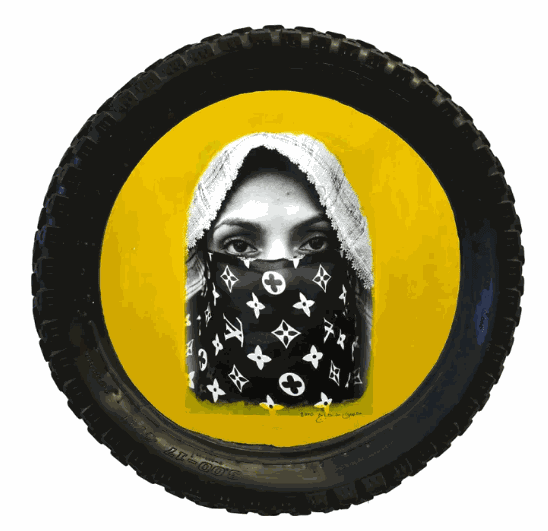A slow and difficult process. You know, I grew up on a council estate and the art world was the furthest away from my everyday life and experience I could imagine. My friends and I were almost afraid to enter museums and galleries; it felt that those places were not for us. I never imagined I would become an artist; I simply wanted to create something that celebrated my culture. The positive aspect was that I had nothing to lose and this led me to create and experiment more freely.
At the time of my first solo exhibition at Alessandra Lippini’s Ministero del Gusto gallery in Marrakech. They called me to inform me that some big name from Italy wanted to purchase my works. It was singer Pino Daniele. A few months later, I received a phone call: Pino wanted to use one of my photographs for his album cover. That’s how I found myself in Rome. While we were discussing the details of the cover, I had an Aha! moment and thought ‘Perhaps it can be done. Maybe I can make it’. If you asked me to isolate the moment I started to believe in it, I would say that was the one.
When I started, at the end of the 90’s, there weren’t many international Arab artists. In a sense, I found myself at the start of a new era and I was extremely lucky. Then, September 11th happened and it changed everything, starting from the way the West saw us. Then a second revolution occurred, though of a different type – that of social media. Now you no longer need the support of a gallery: the new generations of artists can skip the traditional platforms and this means, among others, greater freedom of action.
You were born in Morocco but grew up in London and your works mix Pop Western elements and the Moroccan artistic traditions: how do you make these two aesthetics co-exist?
I believe that were I raised in only one country I would have never been able to do the job I do. At the beginning it was difficult to make two such different worlds co-exist but in the end it’s only a matter of learning to be at ease in one own’s skin: I am both Moroccan and a Londoner. I don’t make any comparisons. This is simply how it is.
You often portray friends and acquaintances and create long-term relationships moving from one project to the next, as in the one featuring Karima who, after Kesh Angels, ended up becoming the protagonist of your first feature. How do you chose your subjects?
Everyone I decide to shoot must have some kind of special energy, a story that transpires from their very being. It doesn’t matter what they do, whether they are boxers, henna girls, fashion designers or belly dancers. They still ought to have that energy and special strength.
A section of the exhibition at MEP will be titled “Vogue – The Arab Issue”. How did the idea come about?
The exhibition will be partly a retrospective and partly the presentation of new or previously unseen works. The idea is to chronicle my journey from the beginning up to now and obviously, fashion is part of this journey. Creating an Arab Issue for Vogue is a way to show an international Arab world, one that comprises other cultures and is open. A way of showing in one platform the richness of the Arab diaspora. It’s a project about how culture, art and fashion are something fluid, permeable and constantly flowing. They do not segregate and do not divide: they unite. Or at least they should.

